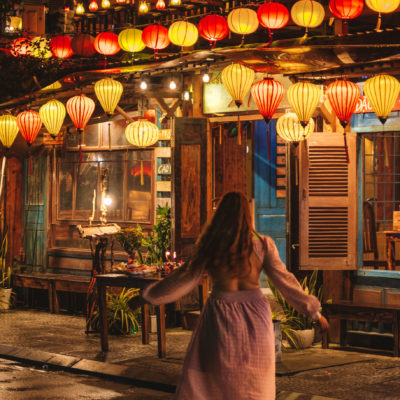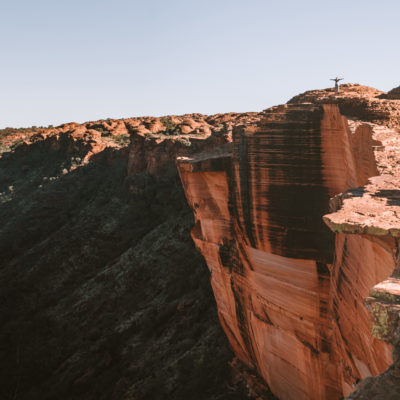Kakadu National Park is Australia’s largest National park, spanning almost 20,000 square kilometres. It is famous for its stunning natural beauty and immense cultural importance to indigenous people. There is truly something for everyone at Kakadu, be it waterfalls, hiking or bird-watching. I recommend spending at least 3 days in Kakadu National Park – use this guide to help you make the most of it!
You must purchase a park pass to visit Kakadu National Park. In the Dry Season (from 15th May – 31st October) the cost is $40 per adult for a 7 day pass or $100 for a family (2 adults and 2+ children). During Darwin’s tropical summer (1st November – 14th May) the cost is $25 per adult or $65 for a family. You can buy passes from the Bowali Visitor Centre or online in advance to save time. Kakadu park passes are free for Northern Territory residents.
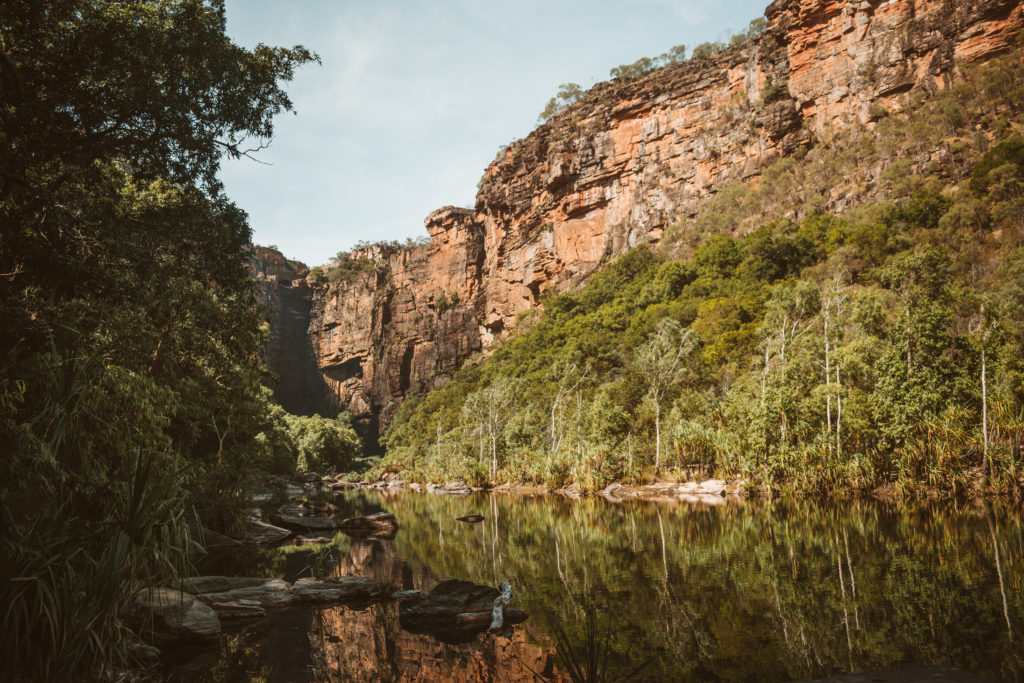
WHEN TO VISIT KAKADU NATIONAL PARK
The best time of year to visit Kakadu National Park is in the dry season from May to October. During the wet season access roads flood and saltwater crocodiles take up residence in Kakadu’s waterfalls and gorges. It can take several months for certain areas of the park to reopen, depending on how wet the previous wet season has been. This year the waterfalls didn’t open until July and even then there are a couple that remain closed. If you are visiting during the wet season, consider doing a scenic flight so you can see the waterfalls from above!
GETTING THERE
Kakadu is a 3 hour drive on sealed roads from Darwin and is a good detour en route south or north between Darwin and Katherine. Whilst a lot of the park is accessible in a 2WD I definitely recommend visiting with a 4WD so you can make the most of what Kakadu has to offer. Several of Kakadu’s waterfalls are currently closed which means Jim Jim Falls and Maguk Falls (both on 4WD roads) are your main options. Whilst you could probably – slowly – get to Maguk Falls in a 2WD you definitely couldn’t get to Jim Jim Falls.
Phone service is limited throughout the National park (only really at Jabiru and Cooinda) so make sure to download any maps and information beforehand. Fuel is available at both Jabiru and Cooinda but be warned, it doesn’t come cheap. Expect to pay over $2 per litre for diesel!
WHAT TO DO IN KAKADU NATIONAL PARK
CAHILL’S CROSSING
Cahill’s crossing is one of the first places you will come to if entering Kakadu National Park from Darwin. Stop by to watch cars drive through croc-infested waters to get to Arnhem Land. You need a permit to cross the river into Arnhem Land but there’s a viewing platform just beside it. If you’re lucky you’ll catch a glimpse of the Northern Territory’s infamous saltwater crocodiles!

UBIRR
A 1 km circuit leads you beneath Ubirr’s rocky ledges where Aboriginal people used to shelter, share stories, and paint. Here you’ll find some of the finest examples of rock art in the world. The paintings show animals they would hunt, as well as depictions of laws, stories and warnings. Some of the rock art is thousands of years old which is incredible.
The path leads to a steep climb up the rock face to the Nadab Lookout, where you are greeted with panoramic views of the surrounding floodplains and rainforests. It’s a beautiful spot to sit, enjoy and listen to the sounds of nature, especially at sunset. Take a blanket and a picnic and watch the colours of the landscape change around you.

The gates to Ubirr are open from 08:30 – sunset in the dry season (1st April – 30th Nov) or 14:00 – sunset in the wet (1st Dec – 31st March). It should take around 1.5 – 2 hours to complete depending on your fitness and how many photo stops you take!
BURRUNGKUY (NOURLANGIE) REGION
Nawurlandja Lookout is another viewpoint which gives you spectacular views over the famous Nourlangie Rock and an expanse of forest as far as the eye can see. It is a short walk – only 300m each way – but a steep climb up to Nawurlandja Lookout. It is beautiful at any time of day but sunset is undoubtedly the best time to visit. If you’re lucky, you can catch a full moon rising in the sky just beside Nourlangie Rock.
Continue a few minutes down the road to Anbangbang Rock shelter, an aboriginal art site just underneath Nourlangie Rock. There is an enormous rocky overhang where Aboriginal people used to shelter from the elements, leaving behind countless paintings. It is an easy path through the art sites which continues until you reach the Gunwarrdehwarrde Lookout. It’s not a long hike but it does get steep towards the end. It’s well worth it, though, for the views over the forest and Nourlangie Rock!
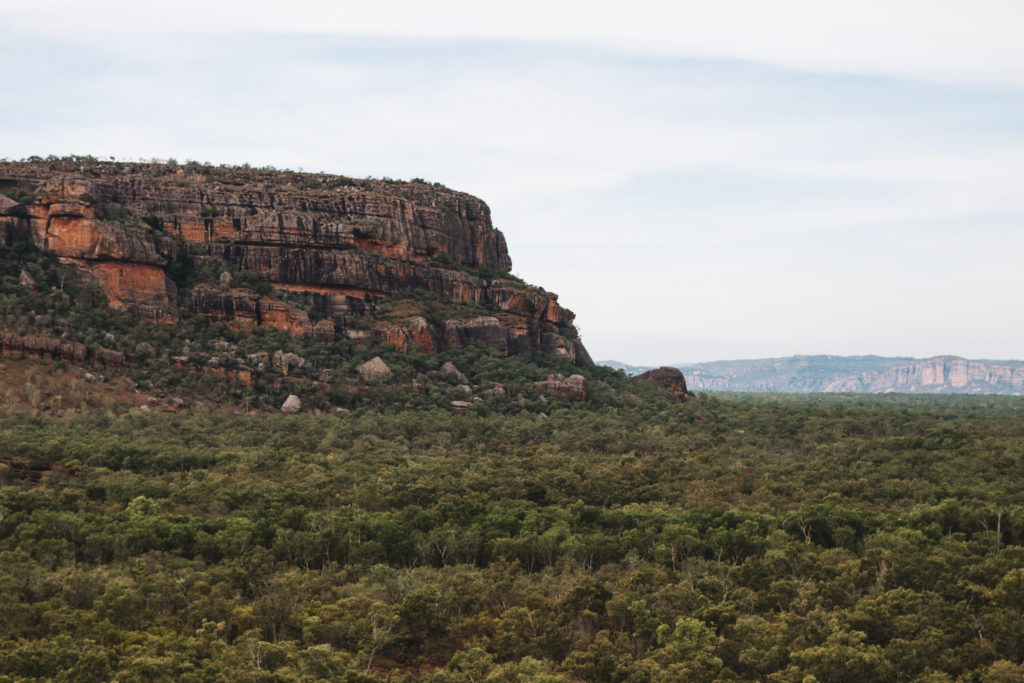
The road into the Nourlangie region is open from 8am-sunset.
JIM JIM / TWIN FALLS
Usually I’ll say that a 2WD will manage on most 4WD only roads, but not this one. The road in has some of the worst corrugations I’ve seen. If that’s not enough, the last 8km are on a single track road with sand, bumps, rocks and creek crossings. As long as you have a reliable 4WD it’s easy going, but seriously – do not attempt to get there if you don’t have one. The walk to the falls from the car park is fairly flat but does involve scrambling over rocks. It shouldn’t take more than an hour.
In the dry season the waterfall is only a trickle but there is a huge plunge pool to cool off in and sandy beaches. If you visit Kakadu during the wet season it’s definitely worth doing a scenic flight over Jim Jim Falls to see it in full flow!

About 750m before you get to Jim Jim Falls you’ll see a fork in the road to the right which takes you to Twin Falls. You will need a decent 4WD with a snorkel to cross Jim Jim Creek, which is only passable in the dry season. Keep up to date with Kakadu’s Access Report here.
The walk to the base of the gorge is currently closed but you can still experience the falls from above on the Twin Falls Plateau Walk. The 6km return walk takes around 5 hours to complete.
MAGUK FALLS (BARRAMUNDI GORGE)
The road in to Maguk Falls is a bit rough but probably manageable in a 2WD as it’s only 14 km from the main road. It takes about 15 mins in a 4WD so as long as you take it slow you should be fine! From the car park to the falls takes about 45 minutes each way over rocks and creek crossings.
The path meets a huge pool with beautiful clear water and a waterfall. It’s a very popular spot especially given the closures of other waterfalls in Kakadu National Park so expect it to be busy. Arrive early if you want to get this spot to yourself, although the sun doesn’t hit until after 10 am so it might be a bit chilly!

There are some secret rock pools at the top of the falls that are often much less busy. To get there, follow the path towards the main pool until the path crosses the creek. Instead of turning right and crossing to the other side keep to the left where you will see a track into the bush. You’ll know you’re in the right place when you see a sign saying you need a bush walking permit – walking here is not technically allowed so do so at your own risk.
At the top of the falls you’ll find several pools and a little infinity pool right on the edge of the waterfall. The pools are shallow enough that they get heated in the sun so you can easily spend several hours chilling and exploring pools further up the creek.
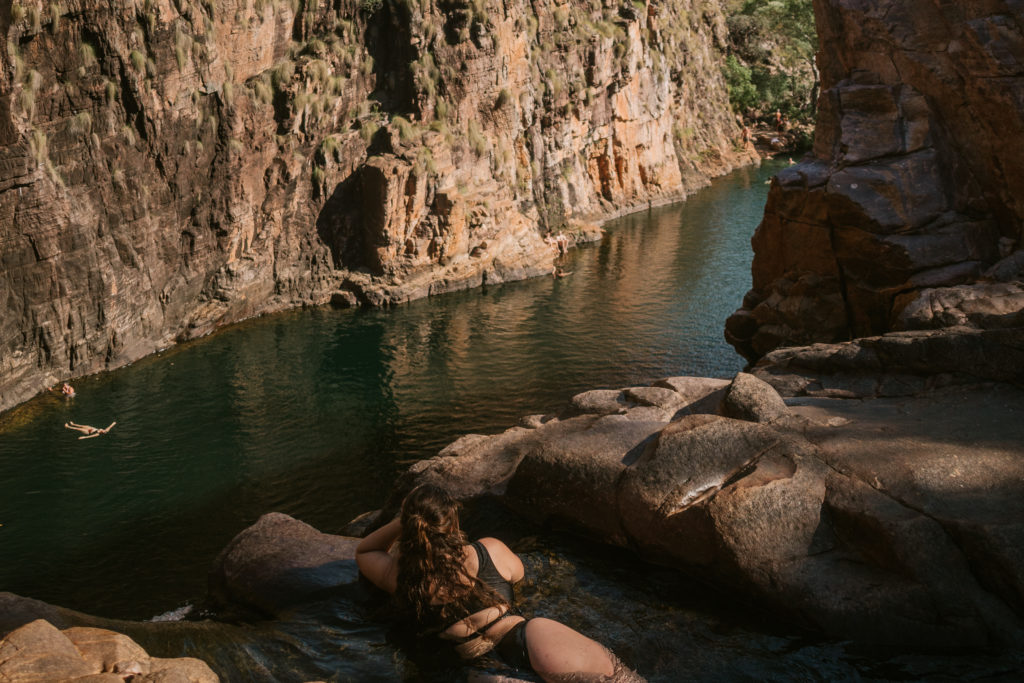
GUNLOM FALLS
Gunlom Falls and the incredible infinity pools above are currently closed and have been for a couple of years. Apparently there has been a dispute between the Kakadu National Park management and the traditional owners over a path that went too close to a sacred site. Fingers crossed it gets resolved soon so that Gunlom Falls can reopen!
WHERE TO STAY IN KAKADU NATIONAL PARK
Camping is the cheapest option and there are many campsites around Kakadu National Park. I’d recommend these campsites as good bases to explore the park from:
- Merl Camp: close to Cahills Crossing and Ubirr ($15 pp / night)
- Garnamarr Camp: just before the 4WD track to Jim Jim Falls and Twin Falls ($15 pp / night)
- Maguk Camp: get to Maguk early before it gets busy ($6 pp / night)
Depending on your budget, there are also a selection of resorts and hotels throughout the park, including:
- Mercure Kakadu Crocodile Hotel: a hotel entirely shaped like a crocodile! The hotel is in the centre of Jabiru so it is close to the attractions in the North of the park, such as Ubirr and Cahill’s Crossing ($288 + / night)
- Cooinda Lodge: right beside Yellow Water (Ngurrungurrudjba). If you have the time, catch a sunrise or sunset cruise through the billabong. ($399 + / night)
- Bamurru Plains: a remote bush experience right on the edge of Kakadu National Park. (from $3,710 / night for a luxury safari-style bungalow)
WHAT TO BRING
- Insect repellent – a lot of Kakadu is a wetlands area so expect mozzies everywhere
- Swimming costume and towel – you’ll definitely want to go for a dip!
- Water – it can get really hot, especially if you’re hiking
- Sensible shoes, a hat, suncream


